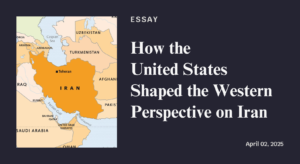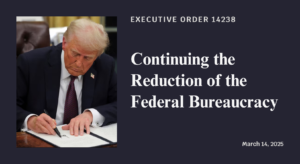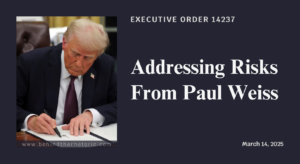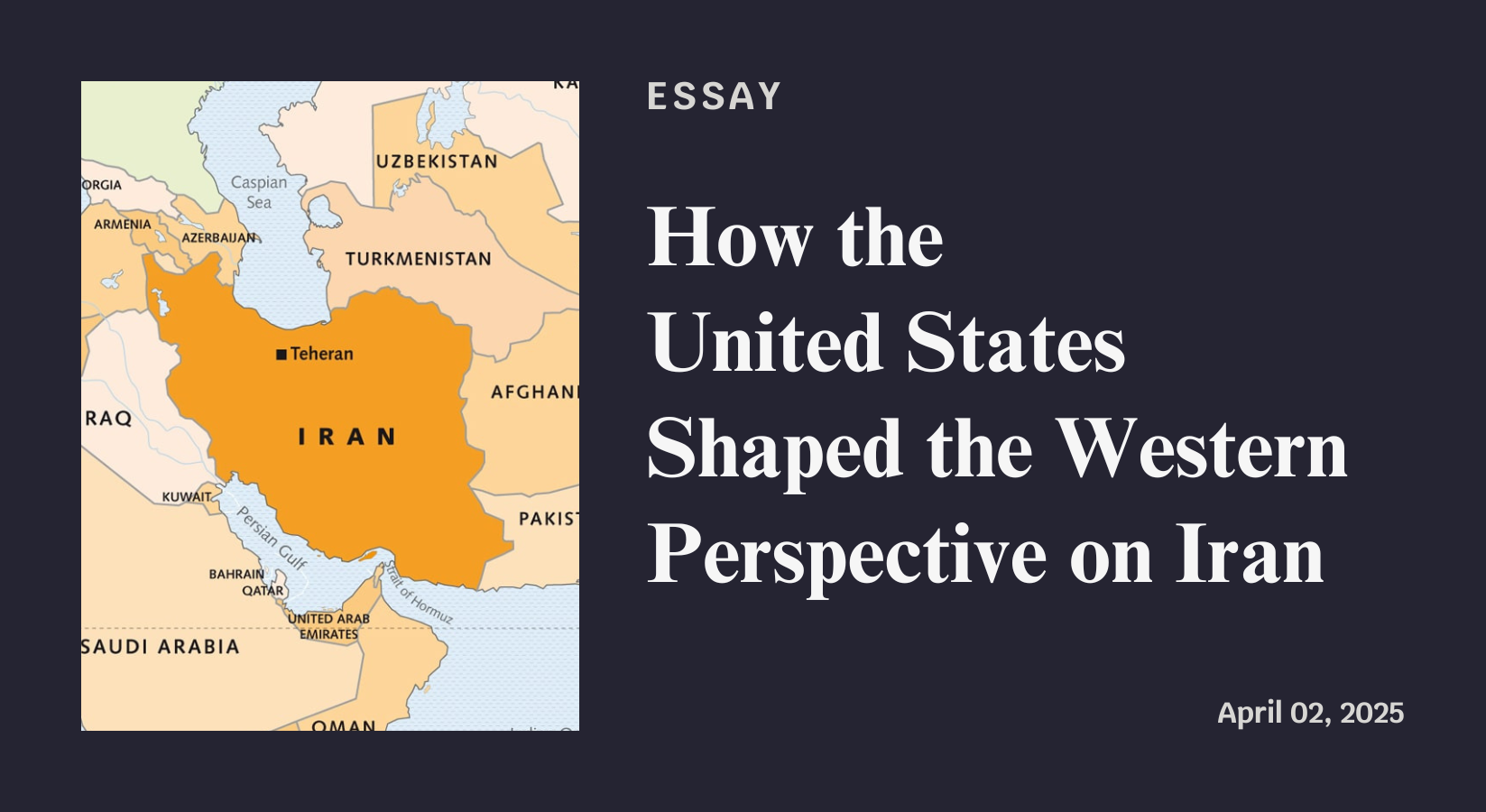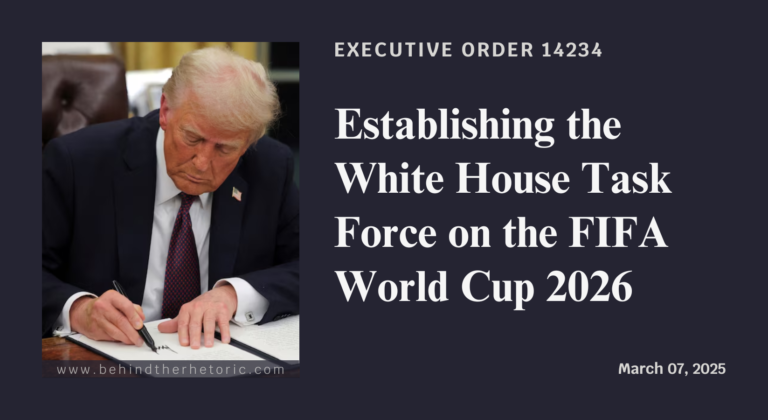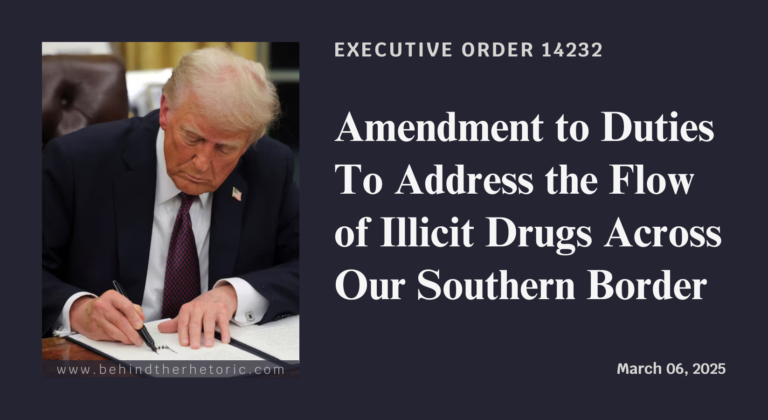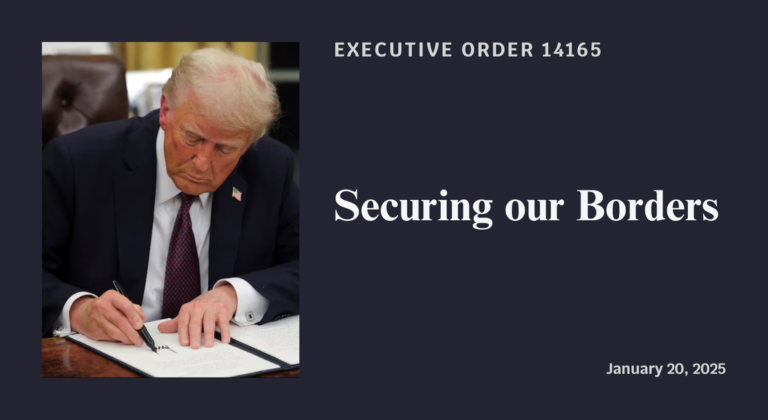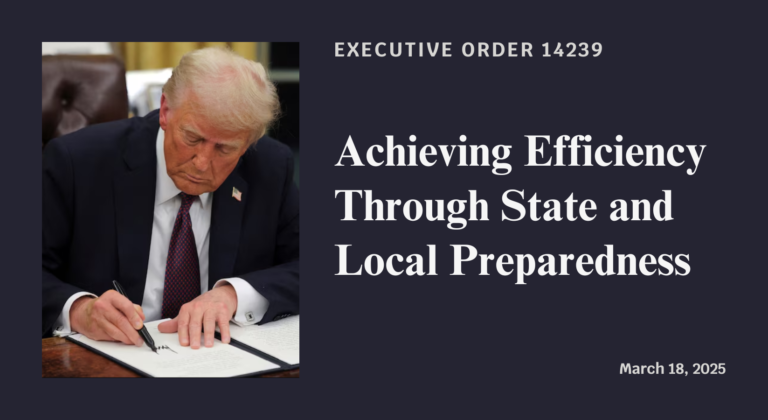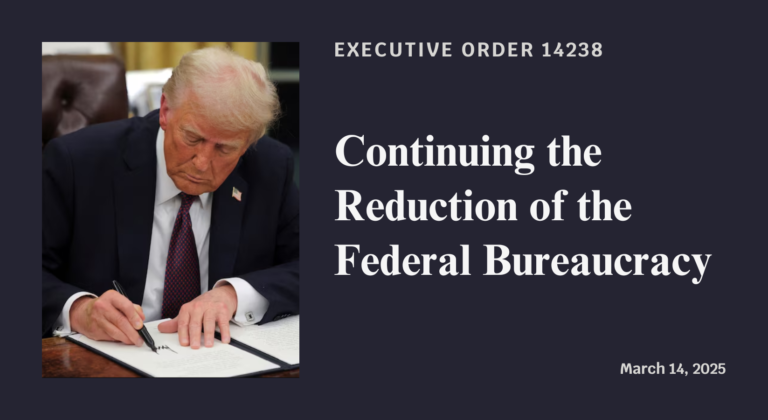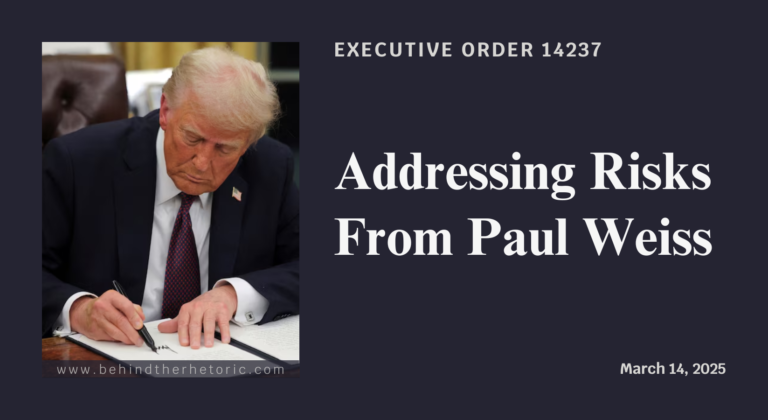The views and analysis presented in this article are intended solely to examine media narratives, political rhetoric, and foreign policy discourse concerning the Islamic Republic of Iran. The author does not endorse, condone, or support terrorism, violence, or the funding of such acts by any state or non-state actor. This article does not seek to excuse human rights violations, oppression, or state-sponsored violence committed by the Islamic Republic of Iran or any government. Rather, it aims to explore how systemic bias, misinformation, and political narratives have shaped public understanding. All interpretations are offered with the intention of promoting a more informed and nuanced discussion of international affairs and media representation.
Since the attacks of September 11, 2001, Americans have been presented with a stark, often frightening image of Iran. For many ordinary U.S. citizens – especially those in conservative, rural areas – Iran has been cast as a fanatical nation bent on destruction. This perspective did not arise by accident. It was deliberately shaped by U.S. political leaders and media narratives over the past two decades. In speeches and headlines, Iran has been portrayed as irrational, extremist, and uniquely dangerous. Misleading translations and outright misinformation have reinforced this image, as has a backdrop of Islamophobia that grew after 9/11. The result is a Western (and particularly American) view of Iran defined by fear and mistrust. This article examines how U.S. government rhetoric, media misrepresentation, and anti-Muslim sentiment combined to create and solidify that narrative from 2001 to the present (2025). We will explore key myths (like claims that Iran wanted to “wipe Israel off the map” or that the U.S. “gave Iran $150 billion in cash”), the rhetoric of leaders like George W. Bush and Donald Trump, the role of conservative media (Fox News, talk radio, etc.), and how U.S. policies and conflicts have influenced public perceptions. The goal is to clearly explain – in plain language – how the American government and media shaped Iran’s image, so readers can better understand the origins of what they’ve been told and perhaps question the misinformation.
Post-9/11 Fear and the “Axis of Evil”
In the wake of September 11, 2001, Americans were anxious and angry, looking for enemies to hold responsible. Although Iran had nothing to do with the 9/11 attacks, the U.S. government soon lumped Iran into the same category as the terrorists who struck New York and Washington. In his 2002 State of the Union address – delivered less than five months after 9/11 – President George W. Bush famously labeled Iran part of an “axis of evil” alongside North Korea and Iraq (source). Bush claimed these states “arm to threaten the peace of the world” and “pose a grave and growing danger” by seeking weapons of mass destruction (source). He warned that “the price of indifference would be catastrophic” (source). This dramatic language, coming at a moment of high tension, set the tone. It told Americans that Iran was not just a distant country with differing interests – it was an existential threat linked to terrorism and potential nuclear devastation.
It’s important to note how powerful this framing was. At the time, most Americans knew little about Iran. But hearing the U.S. President list Iran alongside the perpetrators of 9/11 (even though none of the 9/11 hijackers were Iranian) planted a lasting association. Iran was depicted as part of the same evil that attacked America (source). This “rogue state” image was reinforced by repeated official statements. Bush administration officials and like-minded politicians frequently emphasized Iran’s designation as the “world’s leading state sponsor of terrorism”, citing its support for groups like Hezbollah. In the charged post-9/11 atmosphere, such statements fell on receptive ears. An American public still fearful of Islamist extremists was primed to see Iran – an Islamic Republic – as another source of mortal danger.
Thus, from the earliest days of the “War on Terror,” the U.S. government narrative cast Iran in a menacing light. Iran was bundled into what Bush called the broader fight against “evil”. And because mainstream American media largely echoed the administration’s framing, this view penetrated deeply. News reports dutifully repeated the “axis of evil” label and often mentioned Iran in the same breath as Al-Qaeda or the Taliban (despite the lack of direct connections). By bracketing Iran with the likes of Saddam Hussein and Kim Jong-il, the U.S. government ensured that a generation of Americans would grow up thinking of Iran first and foremost as an enemy (source). This foundational narrative would only be reinforced in the years to come.
Islamophobia and Simplistic Stereotypes
Another factor making Americans susceptible to a one-dimensional, hostile view of Iran has been the rise of Islamophobia after 9/11. Iran is a predominantly Muslim country – officially an “Islamic Republic.” In the minds of many Americans, especially those with little exposure to Muslims in everyday life, Iran’s Islamic identity linked it with the same fear they felt toward the 9/11 terrorists. Unfortunately, this led to a broad-brush distrust of Muslim countries in general. Polling data underscores this trend: as of 2015, 55% of Americans had an unfavorable opinion of Islam (source). In a 2014 survey, when asked to rate religious groups, Americans on average gave Muslims a very cold rating (only 40 out of 100 on a “feeling thermometer,” one of the lowest scores for any group) (source). Feelings were especially negative among older and conservative Americans (source). This Islamophobic sentiment created fertile ground for demonizing Iran.
U.S. media and political rhetoric leveraged these prejudices. Instead of distinguishing between different strands of Islam or the unique political context of Iran, commentators often spoke about Iran in the same breath as “radical Islamic terrorism.” For example, Iran’s clerical leadership was sometimes described as “Islamofascists” or “mad mullahs,” phrases that conjured an image of fanatical religious tyrants. Such labels played on Americans’ post-9/11 anxieties. If “Islamic extremists” had attacked the U.S. once, the implication was that Iran’s Islamic government might do something equally irrational and violent.
Conservative media in particular pushed these simplistic stereotypes. Talk radio shows and cable news segments frequently highlighted provocative images – such as Iranian crowds shouting “Death to America” – without explaining the context, thus deepening the impression that Iranians collectively hate Americans. These outlets rarely mentioned that many Iranians actually held candlelight vigils in sympathy after 9/11, or that “Death to America” is typically a political slogan meaning opposition to U.S. policies, not a literal wish to kill Americans. Instead, the nuance was lost. What many in the heartland heard were angry chants and saw flag burnings on TV, reinforcing a feeling that Iran’s people and leaders were irrationally hostile.
In the mid-2000s, some media personalities even cast Iran’s leadership in almost apocalyptic terms. A notable example was Fox News host Glenn Beck, who in 2011 devoted segments of his show to Iran’s religious beliefs. Beck described the Iranian regime as Twelver Shi’a Muslims awaiting the return of the “12th Imam” (a messianic figure in Shi’a theology). He told his audience that Iran’s leaders believed in bringing about the end of the world to hasten this Imam’s coming – essentially accusing them of welcoming Armageddon (source). Beck openly called these Islamic beliefs “crazy” and suggested that if Iran obtained nuclear weapons, its rulers might actually use them in a suicidal bid to fulfill prophecy (source). “The danger,” Beck intoned, was that people with such end-times beliefs could soon have their “finger on the button” of a bomb (source). This kind of rhetoric, though extreme, reached millions via conservative media. It painted Iran’s leadership not just as adversarial, but as fundamentally irrational and religiously fanatical – beyond the reach of normal deterrence or diplomacy.
The cumulative effect of these messages was powerful. Average Americans with limited knowledge of Iran came to see the country through a distorted lens of religion and fear. Islamophobia blurred distinctions and made it easier to accept that Iran behaved out of sheer hatred or extremism rather than understandable (even if oppositional) interests. When you’re told over and over that those people are crazed religious zealots who “hate our freedom” – a common post-9/11 trope – it becomes difficult to imagine that Iranians might be rational actors or that they might fear us as much as we fear them. This mindset, encouraged by both political rhetoric and media framing, set the stage for Americans to readily believe many of the more specific narratives and myths that came next.
Portraying Iran as Irrational and Uniquely Dangerous
Beyond general anti-Muslim sentiment, U.S. officials and analysts have often argued that Iran poses a unique threat – that its regime is not only hostile, but also fundamentally irrational or undeterrable. This narrative holds that Iran’s leaders might do things no other country would, such as launching a nuclear strike even if it means their own destruction. Such claims go further than just saying Iran is an enemy; they suggest Iran’s leadership has a death wish or apocalypse complex, making the country far more dangerous than a typical adversary.
American hardliners have explicitly made this case. Some proponents of military action against Iran contended that the normal logic of deterrence (which prevented nuclear war with the Soviet Union and China) would not work with Tehran. They argued that Iran’s regime was an outlier in its “dangerous and irrational” nature (source). One analysis described this hawkish view: “Proponents of the military option are arguing that Iran has a uniquely dangerous and irrational regime that would make it the sole exception of the nuclear age.” (source) In other words, they painted Iran’s rulers as so extreme that if Iran got nuclear weapons, it would be the first country in modern history that could not be trusted to avoid mutual destruction.
This notion of an undeterrable Iran filtered into public discourse via think-tank reports, expert testimonies, and media commentary. It was reinforced every time Iranian leaders were depicted as suicidal zealots. Iran’s former president Mahmoud Ahmadinejad, with his fiery rhetoric, provided fodder for this portrayal (even if much of his rhetoric was distorted in translation, as we will see). To American audiences, leaders like Supreme Leader Ayatollah Khamenei – often shown in clerical robes and turbans – appeared enigmatic and ominous. Few understood Iran’s internal politics (for instance, that the supreme leader, not the president, has final say on security matters). Instead, U.S. media tended to personalize Iran’s government as a single monolithic villain. After 2005, Ahmadinejad was often presented as the face of Iran, and media coverage highlighted his most extreme-sounding statements to support the idea that Iran’s regime acted outside the bounds of normal rationality.
For example, when Ahmadinejad questioned the Holocaust or spoke in apocalyptic metaphors about the return of the Mahdi (the Shi’a messiah), American outlets amplified those remarks with little context. Commentators seized on such quotes to argue that Iran’s leadership had a martyr complex or even a desire to spark a holy war. The late U.S. Senator John McCain once joked about bombing Iran by singing “Bomb, bomb, bomb, bomb, bomb Iran” to the tune of a Beach Boys song – a grim jest, but one that reflected how commonplace the idea of war with an “irrational” Iran had become in American political culture.
By treating Iran as “the world’s most dangerous regime” in speeches and analysis, U.S. officials helped cement public support for hardline policies. If a nation is seen as crazily aggressive or messianic, Americans are more likely to endorse drastic measures to contain or destroy it. This characterization also implied that negotiating with Iran was futile or naive – a theme that would resurface forcefully when an actual nuclear agreement materialized years later. Overall, portraying Iran as beyond reason cleared the way for confrontational U.S. approaches, because a large segment of the public came to believe that Iran would do something terrible unless stopped. This fear, layered on top of the Islamophobia discussed earlier, created an ingrained perception: Iran was not just another country with clashing interests – it was an ominous loose cannon on the world stage.
Myths, Misquotes, and Misinformation in the Media
If political speeches provided the broad strokes of Iran’s villainous image, media coverage supplied the vivid details – unfortunately, not always accurately. Over the years, several misquotes and misinformation campaigns have greatly influenced how Americans view Iran. These false or misleading stories have often gone uncorrected in the popular consciousness, leaving many people misinformed about Iran’s intentions and actions. Here we highlight two of the most impactful examples: the “wipe Israel off the map” quote and the “$150 billion giveaway” narrative.
“Wipe Israel off the map.”
This phrase has been quoted countless times in Western media as something Iran’s former president Mahmoud Ahmadinejad said. It has been cited as proof that Iran seeks the literal destruction of Israel and possibly another Holocaust of the Jewish people. In reality, Ahmadinejad never actually said that – at least not in the way it was translated and reported (source). The story comes from a 2005 speech in which Ahmadinejad quoted the late Ayatollah Khomeini. What he said in Farsi was that “this regime occupying Jerusalem must vanish from the page of time.” (source) There was no mention of wiping anyone off a map (indeed, linguists note that the idiom “wipe off the map” doesn’t even exist in Persian) (source). Ahmadinejad was talking about the political “regime” in Israel (the government), not the physical country or its people, and he was expressing a hope that eventually the regime would fall (just as the Shah’s regime in Iran had fallen) (source, source). He was not announcing an Iranian plan to attack Israel.
However, this crucial nuance was lost in translation and certainly lost in the media echo chamber. Major outlets ran headlines like “Iranian President: Israel must be wiped off the map.” The misquote spread worldwide. In the U.S., it became a talking point to show that Iran’s leaders were as genocidal as Hitler. One Guardian journalist noted it was a “propaganda distortion” – yet a highly effective one (source) (source). Western hawks frequently linked Ahmadinejad to Hitler based on this false quote, even displaying images of him next to images of Hitler at conferences (source). The American public, hearing these reports, understandably concluded that Iran had openly declared an intention to annihilate Israel. It’s hard to overstate how much this single myth deepened American distrust: if you believe a nation’s president literally said he wants to “wipe” a country (and U.S. ally) off the map, you would certainly view that nation as an aggressive, irrational threat.
Only years later did fact-checkers and scholars manage to clarify Ahmadinejad’s words. As University of Michigan professor Juan Cole and others explained, a more accurate translation is “the regime occupying Jerusalem must vanish from the page of time,” implying regime change over time, not an immediate violent attack (source, source). Ahmadinejad’s quote was akin to hoping a government would fall, not vowing to destroy a nation. Even Iran’s Supreme Leader Khamenei at the time tried to downplay Ahmadinejad’s remarks, stating Iran “will not commit aggression against any nation.” (source) But by then, the damage was done. The “wipe off the map” line had taken on a life of its own. American media rarely issued prominent corrections, and to this day many Americans still believe Iran explicitly promised to obliterate Israel (source). This misunderstanding has colored every discussion about Iran’s nuclear program – many assume Iran would nuke Israel at the first chance, because “didn’t their president say he’d wipe Israel out?”
The “$150 billion cash giveaway.”
Another pervasive myth in the U.S. is that the Obama administration “gave Iran $150 billion in cash” as part of the 2015 nuclear deal, essentially rewarding Iran for bad behavior. This talking point has been repeated on talk radio, cable news, and even by President Trump. However, it is wildly misleading. In truth, the 2015 nuclear agreement (known as the JCPOA) did not involve the U.S. paying Iran any U.S. taxpayer money. What it did was lift certain sanctions, which in turn unfroze Iran’s own assets that had been locked in foreign banks (source). The money in question belonged to Iran all along – funds from Iranian oil sales that had been inaccessible due to international sanctions. When the deal went into effect, those Iranian funds were released. Some estimates put the total at around $100-150 billion, but even that figure is misleading; the U.S. Treasury said Iran would only get about $50 billion in actual usable assets once outstanding debts were settled (source). And crucially, this was not a pallet of cash from American taxpayers – it was mostly an accounting entry unblocking Iran’s own money.
Despite these facts, opponents of the deal framed it as President Obama “sending $150 billion to Iran” as a gift. This phrasing conjured an image of the U.S. literally shipping boatloads of cash to an enemy. The myth was bolstered by a separate event in early 2016, when about $1.7 billion in cash was flown to Iran – not as part of the nuclear deal, but to settle a decades-old claim (Iran had paid the U.S. for military equipment in the 1970s before the Shah was ousted, and the U.S. never delivered or refunded it; the cash payment returned Iran’s $400 million principal with interest (source, source)). Photos of pallets of cash were used in media reports and political ads, blurring the two issues. Soon, many Americans were under the impression that Obama literally handed the Iranians $150 billion in U.S. funds, plus flew them $1.8 billion in literal cash on the side.
This narrative became a staple on conservative platforms. In reality, “there was no $150 billion payout from the U.S. Treasury.” As the Associated Press clarified, that sum represented Iranian assets held abroad which Iran was allowed to access after the deal (source). Yet President Trump repeatedly claimed “Obama gave Iran $150 billion and we got nothing,” and memes on social media spread the falsehood (source) (source). Fact-checkers labeled the claim false, but by then it had become folklore. National Security Advisor John Bolton and others would frequently mention the supposed $150 billion giveaway to argue that the deal empowered Iran to fund terrorism – despite U.S. officials acknowledging that Iran actually got far less (maybe a third of that amount in liquid assets) and again, it was their money to begin with (source).
Even in August 2020, Trump’s National Security Advisor Robert O’Brien went on Fox News and said: “John Kerry and the JCPOA gave Iran $150 billion in sanctions relief… They spent it on terrorist activities… it was the worst diplomatic deal since the Munich appeasement in 1938.” (source). The reference to Munich 1938 (when European powers appeased Hitler) was meant to dramatize the point – comparing Obama’s deal to Neville Chamberlain’s surrender to the Nazis. The $150 billion figure, though debunked, was used to stoke outrage that Iran got a massive windfall. In truth, Iran did receive significant relief – their own money – and yes, some of it likely went to its military and regional allies (Iran also used portions to stabilize its economy). But the American public was left with a grossly exaggerated impression that U.S. taxpayers literally paid Iran huge sums. This fueled the notion that the U.S. “appeased” Iran and got hoodwinked, further entrenching negative views of Tehran as ungrateful and treacherous.
These are just two examples, but there have been other pieces of misinformation: from sensational (and unproven) claims that Iran was secretly racing toward a bomb even during negotiations, to misreported incidents (like when 10 U.S. Navy sailors strayed into Iranian waters in 2016 and were briefly held – conservative media framed it as Iran “humiliating” America despite the peaceful resolution within 24 hours). Each time such stories circulate without proper context, they harden the public’s worst assumptions about Iran. In the case of the sailor incident, for instance, talk shows used it as “proof” that Iran disrespects the U.S. and cannot be trusted, even though the quick release of the sailors was actually a result of U.S.-Iran diplomatic channels working effectively under the new nuclear deal. These nuances rarely made it to the primetime audience.
In sum, American media – especially partisan outlets – have at times misinformed the public about Iran, whether through inaccurate translations or politically charged mischaracterizations. These myths stick in people’s minds. If you ask an average American in a small town what they recall about Iran, many might say: “Isn’t that the country whose leader said he’d wipe Israel off the map?” or “Didn’t we give them 150 billion dollars?” Such beliefs are the product of years of repetition in U.S. discourse. Unfortunately, they build a case in people’s hearts that Iran is utterly undeserving of trust or sympathy.
The Rhetoric of U.S. Leaders: From Bush to Trump
Misinformation alone wouldn’t have had such impact without constant reinforcement from U.S. political leaders. Over the past two decades, presidents and prominent officials (particularly in Republican administrations) have routinely used combative rhetoric about Iran. These statements, covered extensively by the media, have reinforced the notion of Iran as a dire threat.
George W. Bush’s era (2001–2009): As discussed, President Bush set the tone early with the “axis of evil” speech in 2002 (source). Throughout his presidency, Bush and his team kept Iran in the crosshairs rhetorically. In 2006, Bush said Iran’s pursuit of nuclear technology could ignite “World War III” – a stark hyperbole. Members of his administration alleged Iranian agents were destabilizing Iraq and killing U.S. soldiers (we’ll discuss that impact shortly). The overall message from Bush was that Iran was a rogue regime fueling terrorism and seeking nuclear weapons – a threat that had to be confronted. This was the public rationale behind sanctioning Iran and pushing it to abandon its nuclear enrichment. Even as Iran offered negotiation proposals in the mid-2000s, hardliners in Washington remained distrustful and often dismissed such overtures as tricks.
It wasn’t just Republicans either – some Democrats also used tough language, not wanting to appear weak. But Republican voices were often loudest. Perhaps the most brazen example of Iran war-talk came from Republican Senator John McCain during his 2008 presidential campaign, when at a public event he jokingly sang “Bomb Iran” to the tune of a Beach Boys song (“Barbara Ann”). The crowd chuckled, but the incident made headlines and underscored how normalized the idea of striking Iran had become in U.S. politics.
Barack Obama’s era (2009–2017): President Obama took a markedly different tone. He often stressed that Iran’s people and civilization deserved respect, and he sought engagement (famously sending a video message to Iranians on Nowruz, the Persian New Year). Obama acknowledged the misdeeds of past U.S. policy (like the 1953 coup in Iran) and tried to reduce the demonization. This culminated in the 2015 nuclear deal, where Obama spoke of diplomacy as a way to peacefully resolve disputes. However, even during this period of attempted rapprochement, the rhetoric from Obama’s domestic opponents filled the void. Conservative political figures and media personalities doubled down on harsh portrayals of Iran to argue against Obama’s approach. They branded Obama as naïve or even traitorous for “trusting” Iran.
For instance, in 2015 as the deal was finalized, right-wing commentators accused Obama of ‘capitulating to terrorists’ and committing treason by negotiating with Iran (source). Conservative author Matthew Vadum tweeted, “Treason. Obama will forever live in infamy among America’s enemies. Unmitigated evil.” in reaction to the deal (source). Other pundits blasted the agreement as “surrender” and suggested Obama was effectively helping Iran get the bomb (source, source). These extreme statements were widely shared in conservative circles, reinforcing the view that Iran remained a mortal foe that should never be trusted. Republican leaders in Congress, like Senator Tom Cotton, took the unprecedented step of directly writing to Iran’s government in an attempt to undermine the deal – signaling that as soon as Obama was out of office, they’d take a harder line again.
Donald Trump’s first term (2017–2021): That harder line arrived with President Trump, who made hostility to Iran a signature of his foreign policy. Trump’s rhetoric toward Iran was arguably the most bellicose of any U.S. president since the 1979 Islamic Revolution. He frequently called the Iranian government “radical,” “fanatical,” “reckless,” and “the world’s leading state sponsor of terror.” In his very first speech to the United Nations in September 2017, Trump launched a broadside against Iran’s regime, labeling it “murderous” and accusing it of spreading “chaos, death, and destruction” (source, source). He described the 2015 nuclear deal as “an embarrassment to the United States” and one of the worst, most one-sided transactions ever (source). Trump warned that Iran’s government “cannot endure” if it continued on its path (source), hinting at regime change or collapse.
The tone was unapologetically confrontational. Trump even adopted some of Bush’s moral language, speaking of righteous nations confronting the “wicked” ones, clearly counting Iran among the wicked (source, source). In 2018, after Iranian President Rouhani cautioned the U.S. about hostile policies, Trump fired off a late-night message in all capital letters on Twitter (now X) directly to Rouhani: “NEVER, EVER THREATEN THE UNITED STATES AGAIN OR YOU WILL SUFFER CONSEQUENCES THE LIKES OF WHICH FEW THROUGHOUT HISTORY HAVE EVER SUFFERED BEFORE.” This all-caps tweet was extraordinary – effectively Trump threatening Iran with annihilation if provoked. The world took notice, and American media flashed the tweet across TV screens, further etching the drama into public memory.
In early 2020, U.S.-Iran tensions spiked when Trump ordered the assassination of General Qasem Soleimani, a top Iranian military commander, via drone strike in Baghdad. In defending that risky move (which brought the two countries to the brink of war), Trump and his officials doubled down on painting Soleimani – and by extension the Iranian regime – as unrelentingly evil. They called Soleimani “the world’s number one terrorist” with “blood of hundreds of Americans on his hands.” Many Americans believed this (after all, they had heard about Iran’s role in killing U.S. troops for years) and so largely approved of eliminating him. The administration’s messaging was clear: dealing with Iran’s regime was like dealing with Al-Qaeda or ISIS; you don’t negotiate with such “terrorists,” you eliminate them. Iran’s retaliatory missile strike on a U.S. base in Iraq (which thankfully caused no U.S. deaths) was nonetheless portrayed as Iran “attacking U.S. forces,” solidifying the enemy image.
All these words from leaders matter. When presidents and high officials consistently speak of Iran in demonizing terms, it heavily influences media coverage and public opinion. A dramatic example is how Trump’s phrases made headlines. When Trump called Iran’s government “a murderous regime” in his UN speech (source), that quote was the one splashed across newspapers and news sites. It told the average reader everything they needed to know about the U.S. stance. Likewise, Bush’s “axis of evil” catchphrase back in 2002 dominated news cycles and became a household term. Such rhetoric simplifies a complex reality into a digestible villain narrative – and Americans absorbed it. Even when U.S. administrations changed and tactics shifted (from Bush’s threats to Obama’s talks to Trump’s threats again), the underlying message to the public remained remarkably consistent: Iran is dangerous, Iran can’t be trusted, Iran might do something terrible if we don’t stay tough.
Conservative Media’s Echo Chamber
While presidents set the agenda, the media – especially conservative outlets – amplified and intensified these narratives for everyday Americans. In rural, conservative areas in particular, many people get their news from sources like Fox News, talk radio hosts (Rush Limbaugh, Sean Hannity, etc.), and right-leaning internet sites. These media have played a decisive role in shaping Iran’s image, often taking the government’s already harsh stance and turning it up a notch.
On Fox News, Iran has long been a favorite topic in the context of criticizing U.S. policy. During the Obama years, Fox anchors and commentators relentlessly attacked the nuclear deal and cast Iran as deceitful and aggressive. For example, Fox’s Lou Dobbs said the U.S. under Obama “surrendered our immense strength” with the Iran deal (source). Contributors regularly brought up the hostage crisis of 1979 and Iran’s “Death to America” chants as if nothing had changed in 40 years. When Iran tested ballistic missiles or had naval run-ins in the Persian Gulf, Fox panels would frame it as Iran “brazenly provoking” the U.S. and question why Obama wasn’t retaliating. This created an echo chamber of hawkish opinion: viewers heard again and again that Iran was cheating on agreements, plotting terror, and humiliating the U.S., thus any conciliatory approach was foolish.
Talk radio was even more unrestrained. Rush Limbaugh, the late titan of conservative radio, told his millions of listeners in 2015 that Obama “sold out America to Iran” with the nuclear deal (source). He and others amplified the $150 billion giveaway lie, hammered on Iran’s support for groups like Hamas and Hezbollah, and essentially suggested that Obama had betrayed the country by dealing with Iranian “mullahs.” Right-wing talk hosts and bloggers frequently used the word “appeasement”, invoking the infamous Munich agreement with Hitler (as O’Brien did on Fox News in 2020) (source). Some went so far as to suggest Obama secretly wanted Iran to become stronger (a conspiracy theory playing into the false idea that Obama, who had a Kenyan Muslim father, was somehow pro-Iran or anti-American). While fringe, these notions found fertile ground in certain segments of the population.
When Donald Trump came into office and echoed many of these hardline media views, a symbiosis formed. Conservative media praised Trump’s tough stance and amplified it further, which in turn reinforced public support for Trump’s Iran policies. Fox News hosts like Sean Hannity lauded Trump for “finally standing up to Iran” and often gave airtime to Iran hawks (for instance, analysts from the Foundation for Defense of Democracies, a think tank advocating a hard line on Iran). These guests would reinforce every negative aspect of Iran’s behavior and urge even more pressure. In March 2025, Fox News featured an analyst who argued that Iran’s Supreme Leader was simply trying to “buy time” with nuclear negotiations and that “U.S. policy should be to keep [him] off balance.” (source, source) In other words, never let up the pressure or trust Tehran – a clear endorsement of Trump’s aggressive approach.
Conservative talk shows have also ceaselessly highlighted any Iranian rhetoric that sounds threatening. For instance, if Iran’s leadership makes a statement like Khamenei’s recent warning that Iran would respond “decisively” to any U.S. attack (source), right-wing media blasts it as Iran threatening the U.S. (even though it was in response to Trump’s threat to bomb Iran (source)). The subtleties of who is responding to whom get lost. Instead, audiences hear, “See? The Ayatollah is vowing a ‘strong blow’ against us!” – confirming the idea that Iran is itching for a fight. Context – that Iran’s statement was essentially “don’t attack us and we won’t attack you” – is often missing.
Crucially, conservative media has focused on Iran’s worst actions to the exclusion of any mitigating perspective. They remind viewers of Iran’s sponsorship of militias that harmed Americans. It’s true that during the Iraq War, Iranian-supported Shia militias used deadly roadside bombs (EFPs) against U.S. troops. U.S. defense officials later estimated those weapons contributed to the deaths of around 500 U.S. service members in Iraq and Afghanistan (source). Conservative outlets highlight these figures to argue that Iran has been “at war” with the U.S. all along. A Military Times report in 2015 noted “at least 500 U.S. military deaths… were directly linked to Iran”, calling it “grim context” for Obama’s deal (source). Fox News and talk radio picked up such stats, driving home the point that “Iran has American blood on its hands.” This framing makes any softness toward Iran seem not just naïve but disrespectful to fallen American soldiers. Many Americans in military-friendly rural areas took that to heart. They might know someone who served in Iraq or Afghanistan, and the thought that Iran was behind the bombs that killed Americans created a deep well of anger. Conservative media tapped into that anger by constantly referencing Iran’s involvement in killing U.S. troops and dubbing Soleimani “a murderer of Americans.” By 2020, 84% of Americans had an unfavorable view of Iran, and nearly a quarter even named Iran as America’s top enemy in some polls (source, source), a perception fed by these reminders of past bloodshed.
Even beyond news and talk, popular culture and social media in the U.S. have reinforced the negative image. Hollywood films and series often depict Iran or Iranian characters as villains (e.g., nuclear terrorists or fanatical agents). Memes circulate on Facebook among conservative users with exaggerated claims about Iran (for example, misquoting Iranian officials or spreading rumors that Iran chants “Death to Christians” – not true, but such memes exist). The “network of Islamophobia and misinformation” online, as researchers have documented, has included Iran in its target list (source). All of this amounts to an echo chamber where the idea of Iran as a hateful, untrustworthy foe is repeated so often that it becomes almost an article of faith.
For someone in a small town tuning into talk radio on their ride to work, or catching Fox News in the evening, the storyline about Iran has remained remarkably consistent: Iran’s rulers are evil liars; they hate America and Israel; they sponsor terror; they tried to kill our troops; they’ll nuke us or our allies if they ever get the chance. There is rarely a mention of Iran’s perspective or the impact of sanctions on ordinary Iranians, nor acknowledgment of Iran’s own security concerns. That side of the story simply isn’t part of the conservative media diet. And for many, that diet is the only source of international news.
Effects on Public Perception and Policy
After two decades of this steady drumbeat, it’s no surprise that American public opinion toward Iran is overwhelmingly negative. Surveys have consistently found Iran at or near the top of the list of countries Americans view as enemies. Gallup’s annual World Affairs poll in 2020 showed only 11% of Americans had a favorable opinion of Iran – the lowest rating of any country tested, even lower than North Korea (source, source). A stunning 88% viewed Iran unfavorably (source, source). This is not a recent development; Gallup noted that since it began asking in the early 1980s, favorable views of Iran have never exceeded 17%, and at times dropped into single digits (source). By comparison, even countries the U.S. has fought wars against (like Vietnam in the past, or more recently Iraq) or major rivals like China and Russia have higher favorability than Iran in U.S. eyes (source, source). Clearly, the narrative has been effective: Iran is seen as the ultimate bogeyman.
This public sentiment has tangible consequences. It gives U.S. leaders a broad mandate to pursue hostile policies toward Iran, with relatively little political downside domestically. Sanctions that strangle Iran’s economy, for instance, get solid support because Americans believe they are punishing a dangerous regime (and many assume any suffering will push the Iranian people to overthrow their leaders). When President Trump withdrew from the Iran nuclear deal in 2018 and re-imposed crushing sanctions, he did so knowing that many Americans – primed by years of anti-Iran rhetoric – would applaud the move. Indeed, conservative media hailed it, and there was no mass outcry from the public; on the contrary, a lot of average citizens had been convinced that the deal was a mistake and that Iran would only respond to force.
Likewise, military confrontations that would normally be alarming have been met with a level of acceptance. The January 2020 killing of General Soleimani is a case in point. Despite fears that it could spark a larger war, many Americans reacted with outright approval or at least resignation – “he had it coming.” Polling after the strike showed a partisan split (Republicans largely for, Democrats more skeptical), but overall a significant portion of Americans supported the action, reflecting the success of portraying Soleimani and Iran as irredeemable terrorists. Contrast this with, say, the killing of an al-Qaeda leader: the support levels were similar. In the public imagination, thanks to 20 years of messaging, Iran’s regime and terrorist groups like al-Qaeda have been blurred into the same category of mortal enemy.
This dynamic also means there is scant political reward for U.S. politicians to advocate a more nuanced or conciliatory approach. When President Biden (a Democrat) took office in 2021, he was inclined to restore the nuclear deal. But domestic politics – shaped by negative public opinion – made it very difficult. Hawks in Congress and conservative media immediately pounced, accusing Biden of “caving to Iran” just by considering negotiations. Every time there were talks in Vienna about reviving the deal, outlets like Fox News would frame it as Biden “appeasing Tehran” or giving up U.S. leverage (source). Republican lawmakers used the same rhetoric as before, insisting any deal was tantamount to subsidizing Iran’s malign actions (source). Under such pressure, and with Iran’s own hardliners making negotiations tricky, the deal never got fully back on track. By 2025, as we’ll see next, tensions were worse than ever – and part of the reason is that the weight of American public hostility limited diplomatic wiggle room. No U.S. leader wants to be seen as “soft on Iran,” a label that could be politically damaging. So even those who might privately favor engagement often compensate by striking a tough public posture.
In summary, the U.S. government and media narrative about Iran has had a self-reinforcing effect on policy. The more the public believes Iran is a vicious threat, the more they support hardline policies; the more the U.S. pursues hardline policies (sanctions, isolation, even assassination), the more Iranian hardliners respond defiantly, which in turn provides fresh headlines that Iran is acting aggressive – feeding right back into U.S. public belief that Iran only understands force. It’s a vicious cycle of distrust.
One tragic outcome is that ordinary people, both in America and Iran, have suffered from this prolonged animosity. Iranians have endured economic hardship under U.S. sanctions and the constant fear of war, while Americans nearly saw another military conflict and have been saddled with the costs of endless Middle East engagements. And yet, because of how Iran has been framed, many Americans don’t see Iranians as people with similar hopes and fears; they see a caricature of a fanatic, an enemy. Breaking that perception is hard when it’s been built up for so long.
Renewed Tensions under Trump’s Second Term
As of 2025, the hostility between the U.S. and Iran is back at a high pitch. President Donald Trump, now in his second term, has escalated his confrontational approach. The media narrative is once again dominated by talk of potential conflict. Understanding how we got here – all the history we’ve discussed – is crucial, because it explains why so many Americans accept this state of affairs as normal or even necessary.
In early 2025, negotiations (indirect talks that had sputtered under the prior administration) finally collapsed completely. The Trump administration has made it clear it intends not just to contain Iran’s nuclear program, but to force Iran into a much more restrictive deal or perhaps even effect regime change. President Trump himself has issued blunt warnings. In late March 2025, aboard Air Force One, he told reporters: “If they don’t do a deal, there will be bombing.” (source) This chilling ultimatum was reported widely – here was the U.S. President flat-out saying war (“bombing”) is on the table if Iran does not capitulate to his terms. Trump added that if no agreement is reached, he might impose “secondary tariffs” (sanctions) on any country doing business with Iran, as he did in his first term (source). Essentially, “deal on my terms or else” – with “else” meaning military action or total economic siege.
Iran, predictably, responded with defiance. Ayatollah Khamenei, the Supreme Leader, stated that Iran would “respond decisively and immediately” to any U.S. attack and warned that those who threaten Iran will receive a “strong reciprocal blow.” (source) This was covered in U.S. media, but again mostly through the lens of Iran being belligerent. Fox News, for example, framed it as “Iran’s Khamenei warns of a strong blow as Trump threatens bombing”, highlighting the Iranian leader’s aggressive wording (source, source). To an American audience that has long heard about Iran’s aggression, Khamenei’s quote only reinforces what they already believe: Iran is dangerous and will retaliate if challenged – which for hawks justifies a need to be even tougher.
In the U.S. media, especially the conservative side, Trump’s hardline is largely praised or at least presented as justified by Iran’s behavior. Fox News has run segments featuring analysts who argue that Iran is bluffing or buying time and that the U.S. should keep up pressure (source, source). The fact that Trump’s own Director of National Intelligence (notably, DNI Tulsi Gabbard, in a surprising appointment) testified that Iran is not currently building a nuclear weapon (source, source) is downplayed. Here we see a repeat of a familiar pattern: even when U.S. intelligence or experts say Iran isn’t on the verge of some massive threat (similar to how in 2007, the U.S. National Intelligence Estimate concluded Iran had halted its weapons program, or how recently U.S. agencies say Iran hasn’t decided to build a bomb), the political narrative steamrolls over those nuances. In 2025, Trump and conservative media continue talking as if Iran is an imminent nuclear menace regardless of the intelligence. It’s reminiscent of the run-up to the Iraq War, where evidence was selectively used to support a predetermined narrative of threat.
American public opinion, shaped by years of rhetoric, has not strongly opposed these moves toward renewed confrontation. In conservative regions, there is support for Trump’s stance, rooted in the entrenched belief that Iran only understands strength. Some moderate and liberal Americans are wary of war, of course, and protests have occurred in big cities. But in many smaller communities, one hears resignation like, “Well, if Iran hadn’t acted up, we wouldn’t be in this situation. They should know Trump means business.” This sentiment is exactly the outcome of the perspective forged since 2001.
It’s worth noting that as tensions rise, misinformation tends to surge again. Already in 2025, there have been dubious social media claims – for example, posts alleging (without evidence) that Iran is secretly aiding terrorists planning attacks on U.S. soil, or that Iran tried to assassinate U.S. officials in revenge for Soleimani. Such stories, often originating from unverified or partisan sources, spread quickly in the fear-charged environment. They serve to further justify the hostility. A person seeing those posts on Facebook, combined with watching cable news segments about Iran’s “brinkmanship,” is likely to conclude that a showdown is inevitable and Iran brought it on itself.
In the conservative media ecosystem, President Trump is depicted as finally putting Iran in its place after what they consider the weak policies of previous administrations. They point to the failure of diplomacy under Biden and even Obama’s deal as proof that Iran will cheat and lie unless faced with brute force. If there is any Iranian concession or pause, Trump’s backers attribute it to his tough tactics (even if other factors are at play). On the other hand, if Iran reacts aggressively, that too is used to say “see, we told you they’re violent – good thing we’re being tough.” It’s a heads-I-win, tails-you-lose portrayal.
All of this could be leading to a very dangerous moment. With Trump openly threatening bombing and Iran vowing retaliation, the risk of a war – accidental or intentional – is high. Many experts warn that such a conflict would be devastating. But the American public’s capacity to critically evaluate these risks has been hampered by the long campaign of demonization. If you’ve been led to believe that Iran’s regime is akin to a pack of deranged terrorists, you might underestimate the costs of war or believe it’s unavoidable. That is why understanding the backstory – how our perspective has been shaped – is so important.
As of now, in 2025, the U.S. narrative has come full circle back to where it was not long after 9/11: treating Iran as an imminent evil that must be confronted. The only difference is, Iran is much closer to nuclear capability now than it was in 2001 (ironically, partly because the collapse of the JCPOA freed Iran to expand its program). The dire predictions that media have warned about for years may become a self-fulfilling prophecy if miscalculations occur.
Conclusion
For over two decades, the U.S. government and media have largely spoken with one voice in casting Iran as a dangerous pariah. Through loaded political rhetoric, cultural stereotypes, and sometimes outright falsehoods, a narrative took hold that Iran is irrational, extremist, and bent on violence. This narrative was especially driven by Republican leaders and conservative media, who often employed it for political gain – whether rallying support for wars, opposing diplomatic deals, or simply boosting ratings by stoking fear. Islamophobia after 9/11 made the American public particularly receptive to these ideas, as many conflated Iran with the jihadist threat that struck the U.S., even though the reality was more complex.
The consequences of this shaped perspective are visible today. Most Americans know Iran only as a caricature – the turbaned mullah shouting “Death to America” or the sly negotiator tricking naïve diplomats. Seldom do we hear about the other side: the Iranian people’s experiences, the Iranian government’s oft-repeated statements that they seek no war (even as they posture in their own self-interest), or the fact that Iran’s strategic moves often mirror fears any nation would have in their position (surrounded by U.S. military presence, threatened with regime change). None of this is to whitewash Iran’s genuine oppressive policies or malign activities – Iran’s government does support violent militias, does repress its populace at home, and has contributed to instability in its region. But the American perception is skewed to see only the worst and to attribute to Iran the darkest of motives, without context or balance.
By understanding how this perception was crafted – the “why” behind what we’ve been told – we can become more critical consumers of news. When we hear a sensational claim about Iran, we can recall previous myths like “wipe off the map” and ask: is there more to it? When politicians urge confrontation, we can question if it’s truly out of necessity or partly due to a long-nurtured narrative. Importantly, recognizing the role of political rhetoric and media framing does not mean Iran poses no challenge; it means we see that challenge in proportion and reality, rather than through a distorted lens.
Ultimately, the story of how the U.S. shaped the Western perspective on Iran is a cautionary tale. It shows how a powerful country can construct an image of an adversary that justifies even extreme actions – and how the public can be swept along unless they actively seek out the facts. As of 2025, with tensions high once more, there is a real danger that decades of demonization could lead to a conflict no one truly wants. Breaking the cycle requires clarity and education. Hopefully, by peeling back the layers of propaganda and misunderstanding, we can move toward a more informed public discourse – one where Iran is viewed not as a comic-book villain, but as a country of 85 million human beings and a complex government that, like all governments, responds to incentives and pressures.
Changing a deeply embedded perspective is hard. But it starts with articles like this, aiming to educate plainly and factually about how our views have been shaped. If readers from all backgrounds – including those in rural America who might feel far removed from foreign policy debates – can grasp how media and political narratives influenced their opinions, they can approach new information about Iran (and other foreign issues) with a healthier dose of skepticism and understanding. In a world rife with misinformation, that is a vital skill. The U.S. shaped the Western perspective on Iran, but Americans have the power to reshape it through knowledge and critical thinking.
Sources
Associated Press: Obama Didn’t Give Iran ‘150 Billion in Cash’. https://apnews.com/article/archive-fact-checking-2693370009
Beck, Glenn: Iran, Nuclear Weapons & The 12th Imam (Fox News transcript via Mediaite). https://www.mediaite.com/tv/glenn-beck-iran-nuclear-weapons-the-12th-imam
Bousso, Ron: Oil Markets Take Risky Bet on Trump’s Threats on Russia, Iran. https://www.reuters.com/business/energy/oil-markets-take-risky-bet-trumps-threats-russia-iran-bousso-2025-04-01/
Chalabi, Mona: How Anti-Muslim Are Americans? Data Points to Extent of Islamophobia. https://www.theguardian.com/us-news/2015/dec/08/americans-muslims-islamophobia
Columbia Journalism Review: Get the Facts Straight on Iran and EFPs. https://www.cjr.org/behind_the_news/get_the_facts_straight_on_iran.php
DeGrandpre, Andrew and Andrew Tilghman: Iran Linked to Deaths of 500 U.S. Troops in Iraq, Afghanistan. https://www.militarytimes.com/2015/07/14/iran-linked-to-deaths-of-500-u-s-troops-in-iraq-afghanistan/
Dorman, Sam: National Security Adviser Calls Iran Nuke Agreement ‘Worst Diplomatic Deal since the Munich Appeasement’. https://www.foxnews.com/politics/national-security-adviser-calls-iran-nuke-agreement-worst-diplomatic-deal-since-the-munich-appeasement
Fox News: Iran’s Khamenei Warns of ‘Strong Blow’ as Trump Threatens Bombing. https://www.foxnews.com/world/irans-khamenei-warns-of-strong-blow-as-trump-threatens-bombing
Glass, Andrew: President Bush Cites ‘Axis of Evil,’ Jan. 29, 2002. https://www.politico.com/story/2019/01/29/axis-of-evil-speech-bush-1135782
Lamothe, Dan and Joby Warrick: U.S. Says Iran Made Advanced Bombs, Warned Them against Using in Iraq. https://www.latimes.com/archives/la-xpm-2007-feb-27-na-iran27-story.html
Lewis, Bernard: Does Iran Have Something in Common with the Nazis? (Archived from Wall Street Journal). http://online.wsj.com/article/SB115500154238641719.html
McCain, John: McCain Sings ‘Bomb Iran’. https://www.youtube.com/watch?v=o-zoPgv_nYg
McCarthy, Justin: Iran, North Korea Liked Least by Americans. https://news.gallup.com/poll/287025/iran-north-korea-liked-least-americans.aspx
Media Matters: ‘Treason’: Right-Wing Media Lament Historic Deal to Curb Iran’s Nuclear Program. https://www.mediamatters.org/fox-news/treason-right-wing-media-lament-historic-deal-curb-irans-nuclear-program
Mindock, Clark: Donald Trump Calls Iran a ‘Murderous Regime’ in Surprisingly Hostile UN Speech. https://www.independent.co.uk/news/world/americas/us-politics/donald-trump-un-speech-iran-murderous-regime-north-korea-rocket-man-a7955886.html
New Statesman: Debating Ahmadinejad’s ‘Wipe Israel off the Map’ Quote. https://www.newstatesman.com/world-affairs/2012/03/ahmadinejad-israel-iran
Phillips, Morgan: Trump Threatens Iran over Nukes as DNI Gabbard Claims Tehran Is Not Building Bombs. https://www.foxnews.com/politics/trump-iran-bombing-threats-nuclear-program
Pew Research Center: Global Public Opinion of Iran Remains Decidedly Negative. https://www.pewresearch.org/short-reads/2013/09/23/global-public-opinion-of-iran-remains-decidedly-negative/
Politico: Trump Warns That Major Portions of the World ‘Are Going to Hell’. https://www.politico.com/story/2017/09/19/trump-united-nations-speech-242933
Spencer, Saranac Hale: Obama Didn’t Give Iran ‘150 Billion in Cash’. https://www.factcheck.org/2019/03/obama-didnt-give-iran-150-billion-in-cash/
Steele, Jonathan: If Iran Is Ready to Talk, the US Must Do So Unconditionally. https://www.theguardian.com/commentisfree/2006/jun/02/comment.iran
